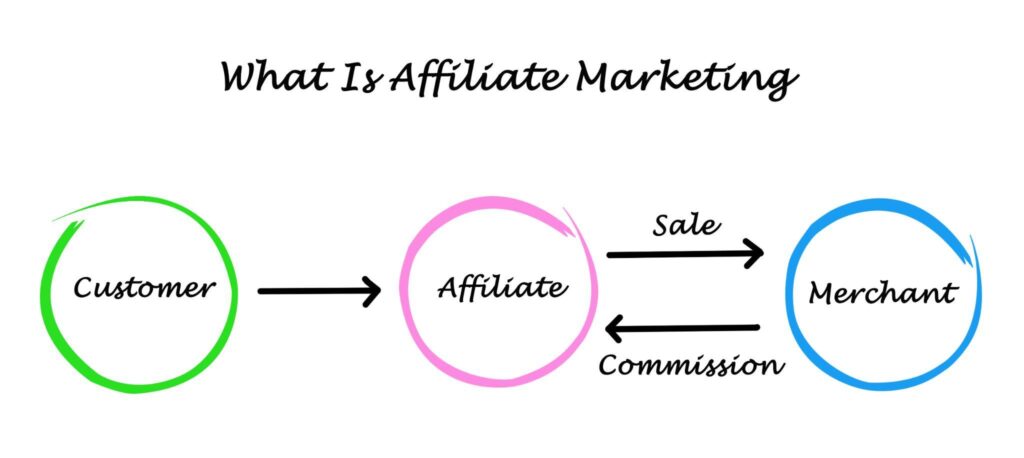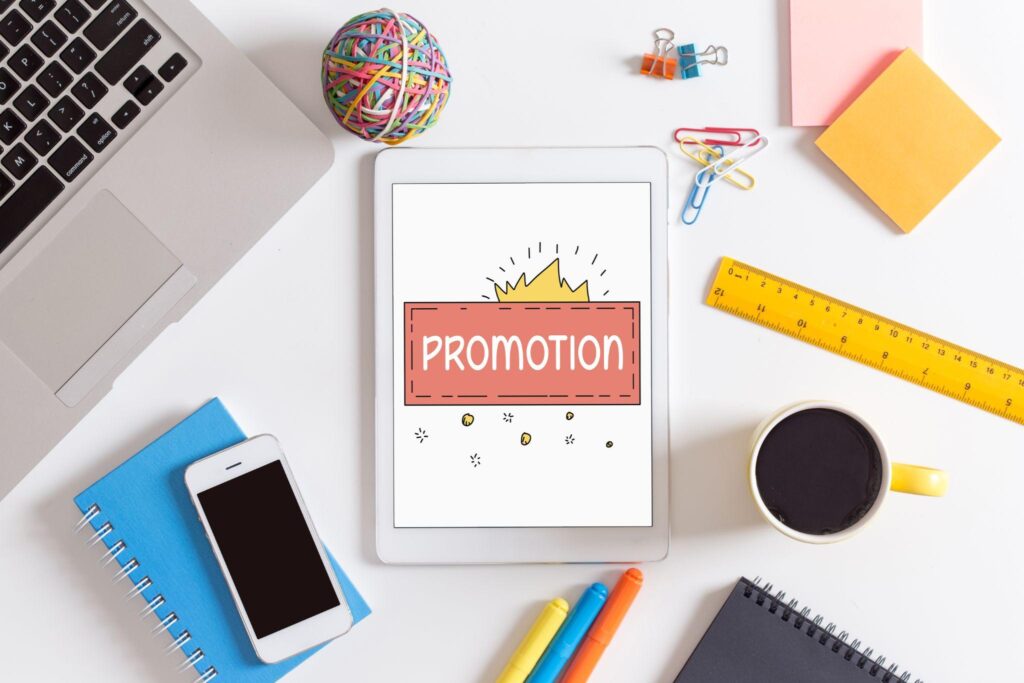Affiliate marketing is an easy-peasy way to add a truly meaningful income stream into the mix, but some solid groundwork is required to make it a raging success.
Doing it wrong could mean:
- wasted time
- less-than-awesome results
- and, worst of all, losing trust with your audience
But doing it RIGHT could mean 6 figures a year in passive income (woot woot)! After just two-and-a-half years of affiliate marketing, I made over $85K USD this year (over $100K in my own currency, CAD—thank you, exchange rate!) in affiliate commissions.
Join me in this video as I help you lay some of the groundwork so that YOU can get started with affiliate marketing right away.
You’ll learn:
- what affiliate marketing is and how it works
- how to find affiliate opportunities
- ways to promote affiliate products
- tips for creating your affiliate marketing strategy
- affiliate marketing mistakes to avoid (hear about my own cringe-worthy mistakes—yikes!)
You can watch the video here or read on for the main points.
(This post contains affiliate links, which means—at zero cost to you—I will earn a small commission if you click through and make a purchase. Thank you for your support!)
What Is Affiliate Marketing and How Does It Work?
Being successful with affiliate marketing starts with understanding what it is and how it works.
Affiliate marketing refers to an arrangement in which an online retailer pays a commission to a third party (such as another retailer, a content creator, or an influencer) for sales or traffic resulting from referrals.
What that means is that you’ll earn a commission of sales (usually a percentage of the sale price) for promoting another person’s or company’s product or service. You may have also heard this type of marketing referred to as a “partner program” or “referral program.”
The key players in affiliate marketing are:
- you (the affiliate)
- the brand / advertiser / merchant (the company whose products / services you are selling)
- the buyer / customer / consumer (your target audience)

Why Would a Company Have an Affiliate Marketing Program?
You might be asking yourself, “Why would a company pay out affiliate income to third parties when they could just sell the products themselves?”
Great question!
More and more brands these days are setting up affiliate programs because these programs allow brands to tap into other people’s existing audiences in a much more targeted way than traditional display advertising or social media advertising can.
Word-of-mouth is a great way for brands to get noticed, so leveraging other people’s audiences within their target market is a great way to gain exposure and, ultimately, more customers.
How Much Can I Get Paid as an Affiliate?
As far as affiliate revenue goes, 40-50% commission is typical for digital products. Physical products typically have much lower commission rates, primarily because they have much smaller profit margins.
Depending on the product or service, affiliate marketers earn either a one-time commission or, if the product or service is subscription-based, a recurring monthly commission for as long as the person who subscribed through the affiliate link remains a subscriber.
Why Start Affiliate Marketing?
Here are a few reasons you should consider becoming an affiliate marketer.
Passive Income
Affiliate marketing is a mostly passive income stream — you don’t have to create the product yourself so 95% of the work is done for you. It can be a great option for those who already have an audience but aren’t ready to launch their own product or service just yet.
Low Barriers to Entry
Another great benefit of affiliate marketing is that the barriers to entry are low. No monetary investment is required to sign up as an affiliate; however, it will take time to promote the products. As a content creator, that might mean writing reviews, email marketing, or social media advertising. I’ll share more on content for affiliates later.
Cost Effective
Since you aren’t creating any products yourself, making money with affiliate marketing is an extremely cost effective way to generate income. There’s no inventory overhead and customer support for the product is done by the brand, not by you. You may need to answer some questions about the product from your own audience, but everything else lies with the brand.
You Don’t Need a HUGE Audience
It’s true that the bigger your audience the better your affiliate income will be, but that doesn’t mean you need a really big audience to get started. Getting started as an affiliate marketer is easy, but it can take time to build momentum if you’re starting with a small audience.

Finding Affiliate Opportunities
The first step to getting started with affiliate marketing is to find a company (or companies) with a product or service you want to promote. You can either work directly with a company to promote a single product or sign up with an affiliate network that offers a range of affiliate products. Some examples of affiliate networks are:
After you identify a company or network, your next step is to sign up to be an affiliate. Many companies will have a link to an application page right on their website.
Once you’re approved you’ll get a unique affiliate link that will track your sales (i.e., conversions). You’ll put this link wherever you want to promote the product or products.
Whenever someone clicks on your affiliate link and makes a purchase, you get paid a commission. Commissions usually pay out on a monthly basis, or after your commissions reach a certain threshold (for example, $100).
Types of products and services you can promote include software, digital courses, coaching services, or physical products like books (and, if you’re an Amazon Affiliate, anything else you can buy on Amazon).
I’m an affiliate for a number of products, including Publisher Rocket (keyword research software), Canva (design software), Creative Fabrica (creative resources), Digital Course Academy (a digital course), Michael Hyatt’s Full Focus Planner, plus a few other, smaller ones.
Promoting Products
Once you’re an affiliate, you’ll want to show your audience how to use the product and how it will help them achieve whatever result they’re after. You’ll do this by creating promotional content and sharing it with your audience.
Build An Audience
If you already have an audience, great! You’re all set to start promoting affiliate products.
If not, your first step will be to build one. You can build an audience through:
- a blog
- a podcast
- a YouTube channel
- social media
Above all, though, you’ll want to start an email list. An email list is where much of your relationship-building with your audience will take place. It’s important to remember that you don’t own your followers on social media, but you do own your email list.
Make a genuine effort to build trust with your audience. People generally want to buy from individuals or brands they know, like, and trust. The best way to build trust with your audience is by offering lots of value in the form of consistent, free, high-quality content.
Once you begin to understand your audience’s pain points, struggles, or desires, you’ll be in a great place to start offering them products or services that can help eliminate those pain points or meet a specific desire. As your trust factor goes up, so will your conversion rates.
It’s incredibly important to only recommend products and services that you have personally used, love, have preferably gotten results from, and that your audience will genuinely find useful and are likely to love and get results from also.
Any attempt to sell irrelevant, poor quality products or services will erode your audience’s trust. Once that trust has been broken you’ll likely never get it back. You must think about your audience first and money second.

Write Compelling Content
To help you promote affiliate offers and get those affiliate sales rolling in, you’ll want to create quality content.
Content creation can come in the form of:
- product reviews
- unboxing videos
- a podcast
- blog posts
- webinars
The purpose of this content is to help your customers see how the product will help address pain points they’re experiencing.
One example of content I recently shared with my email list was a free webinar I hosted in partnership with Hank Marcacci from Publisher Rocket. Publisher Rocket is a tool I use for keyword research. I know my followers will find value in it as it can potentially save them hours of research time.
Another example of valuable content creation is this review that I wrote about Digital Course Academy. I shared an honest review of my experience as a student of the course, along with the results I achieved.
No matter the type of promotional content you create, be sure it adds value to your audience, even if they decide not to purchase.
Share Your Content
Once you’ve created some valuable content it’s time to share it.
On Your Social Media Channels
Share the content (YouTube video, blog post, etc.) you’ve created about the product or service on social media. Most people are wary of people trying to sell directly on social media platforms, so linking to your content is a better option.
With Your Email List
Send information about the product or service to your email subscribers and include your affiliate link. One note about this: the Amazon Affiliates program prohibits sending affiliate links via email, but you can always send them to a post on your site that contains your links.
On Your Website
Add your affiliate links to your website on relevant blog posts, resource pages, and landing pages. You are legally required to disclose to your readers that your content contains affiliate links. For more details on affiliate disclosures, check out this article by Pretty Links.
Tips and Best Practices for Building an Affiliate Marketing Strategy
Here are a few tips and best practices to keep in mind when building an affiliate marketing income stream.
Have an “audience first, money second” mindset. Your audience’s trust is everything, so don’t abuse it. Always state clearly that you are an affiliate. This builds trust, tells people how they can support you, and is required by law.
Additionally, always seek to add value to your audience. If they attend a webinar or listen to a podcast where you promote products, they should still walk away with useful information even if they decide not to purchase.
Build and nurture relationships with the owners of the products and services you recommend. When you’re on great terms with product owners and are bringing in consistent revenue, you may be able to start negotiating discounts for your audience or better commissions for yourself.
Offer unique bonuses to incentivize customers to buy from YOU. When participating in affiliate programs where there is a lot of competition (for example, program launches where over 100 affiliates might be promoting the launch at the same time) one thing you can do to set yourself apart from the competition is to offer unique bonuses to customers who purchase through your affiliate link.
Unique bonuses created by you will help sweeten the deal with your audience and provide them with extra value. For example, as a Digital Course Academy affiliate this year, I offered:
- several group coaching sessions
- an Irresistible Lead Magnet Tool Kit
- my LCPA Launch Debrief, which provided students with the exact facts and figures of the first launch of my own course
These bonuses helped me stand apart in a very competitive space, which ultimately led to higher conversion rates.
Affiliate Marketing Mistakes to Avoid
Now that you’ve heard my tips for building a successful affiliate marketing strategy, here are a few mistakes to avoid.
Don’t recommend products that you are unfamiliar with. If you haven’t used a product or service and try to promote it, you run the risk of promoting bad products that are either poor quality or aren’t relevant to your target audience.
Recommending these types of products or services will erode your audience’s trust and will prevent them from buying anything from you in the future. I made this mistake with a product that I recommended. While the product was good, the checkout process was a poor customer experience and I ended up getting several complaints from ticked off customers.
My mistake was not doing enough due diligence to familiarize myself with the checkout process. Had I gone through the process, I could have provided feedback to the seller requesting they fix it or I would decline to participate.
Thankfully, those who emailed me to complain were understanding when I apologized, but I probably ticked off quite a few more members of my audience who simply unsubscribed from my list without saying anything, meaning that I’ve lost them forever.
Also, once you start building an audience you’ll likely start receiving requests from all sorts of companies wanting you to become an affiliate (some of them absurd—I was asked to promote leggings that give you a “butt lift”). Turn them down unless you try out the product yourself, love it, and know your audience would find it useful. Don’t be tempted by the lure of quick cash.
Don’t over-promote. This is another mistake I’ve made (quite recently, in fact). While promoting Digital Course Academy I sent numerous emails over the course of a few weeks, and it really started to piss off some of my email subscribers, quite a few of whom permanently unsubscribed from my list. What I should have done (and will do next time) is offer a clear way to unsubscribe from that particular series of emails. This puts the control back into the hands of your audience members and keeps their trust intact.
Don’t set it and forget it. Products change, services change, companies change, customer experiences change. Make sure to review the products and services and their attendant customer experiences regularly to ensure they’re still a great fit for your audience. I’ve heard, for example, of a particular company whose customer service went down the drain, and that ended up reflecting poorly on the affiliate partner.
Don’t be dishonest about the product or service. If there are any less-than-desirable aspects of the product or service, let your people know. For example, I recently reviewed a particular product. While I really love the product and do feel good about promoting it, I found the checkout process to be frustrating, so I made sure I mentioned that in my review.
Honesty builds trust. If all you ever write are 100% positive reviews on every product without discussing any ways the product can be improved, your target audience may not trust your recommendations going forward.
Affiliate Marketing Checklist
Here’s a checklist for you if you’re thinking about getting into affiliate marketing. For any product or service you’re considering becoming an affiliate for, make sure you can answer “yes” to all of these questions.
✅ Do I have personal experience with this product or service?
✅ Was my experience positive and did I get the results I was after?
✅ Is this product or service relevant to my audience?
✅ Will this product or service address an audience pain point or desire?
✅ Have I shown my audience how the product or service works and what results can be achieved?
✅ Have I clearly stated in my promotional materials that I am an affiliate?
✅ Have I given my audience a way to opt out of any promotional communications (eg: unsubscribing from an email series)?
I hope you found this information helpful and it’s given you a good place to start with affiliate marketing!
If you’re looking for some more help on getting started creating content and then leveraging that content into a profitable knowledge-based online business, grab my free guide called “The 4-Step ‘No-Time-to-Waste’ Online Business Start Up Blueprint.”
This guide takes you through ALL of the steps of starting an online knowledge-based business, from idea generation all the way through to creating an offer and marketing it to your audience, so definitely check that out!

[…] THE BLOG POST: https://www.rachelharrisonsund.com/affiliate-marketing-101/ […]